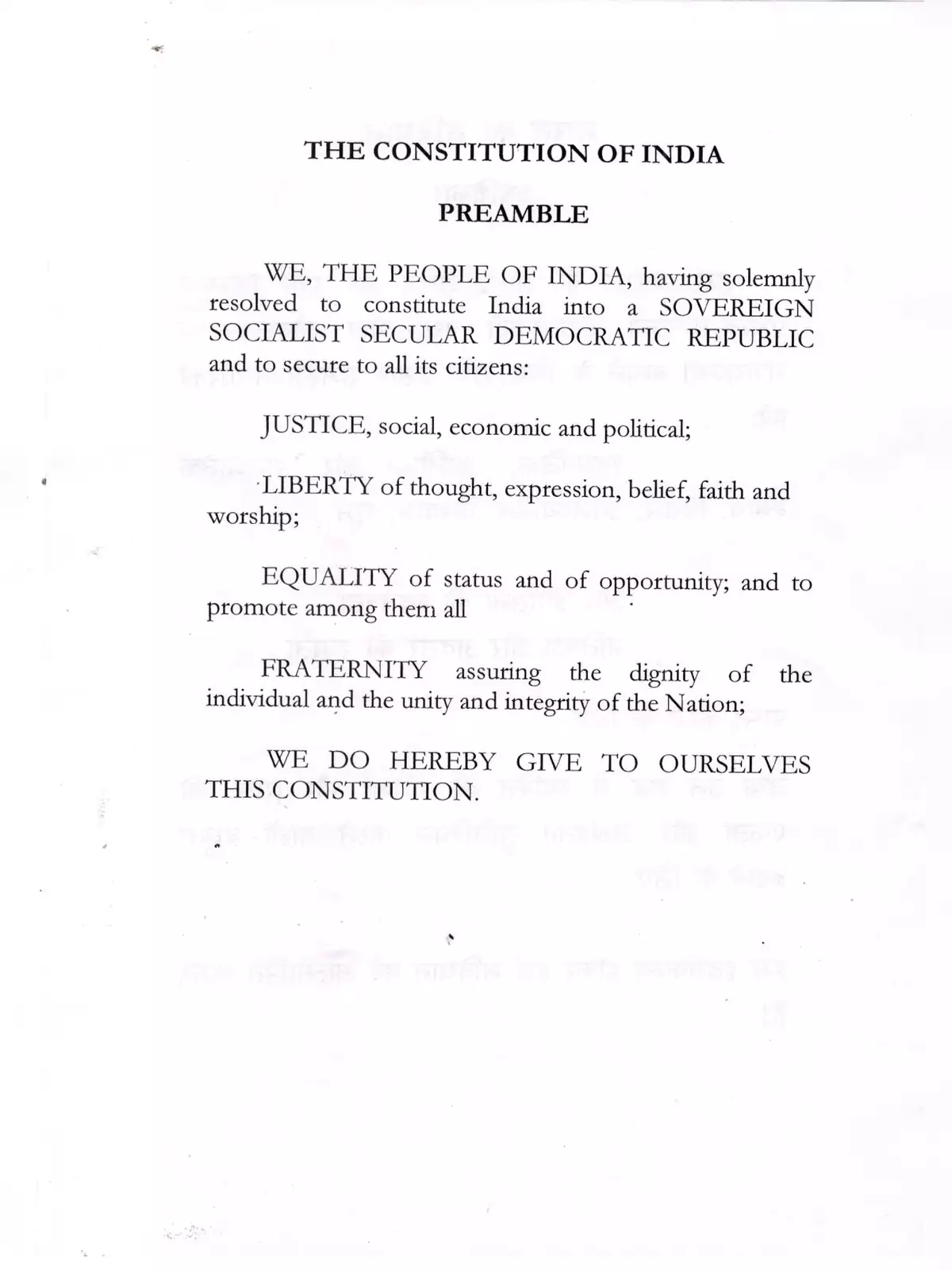Preamble of Indian Constitution - Summary
The Preamble of the Indian Constitution is a concise introductory statement that outlines the guiding principles and objectives of the Constitution of India. It acts as the introduction and embodies the ideals and aspirations of the people of India.
If you are looking for the PDF of the Preamble of the Indian Constitution in Hindi, English, or any other language, you are at the right place! You can easily download the Preamble of the Indian Constitution PDF from the link provided at the bottom of this article.
Understanding the Preamble
The Preamble to the Indian Constitution may not grant any legal rights by itself, but it represents a guiding philosophy for the Constitution. It captures the values and principles that the creators of the Constitution aimed for a modern, democratic, and inclusive India.
This important document reflects a strong commitment to justice, freedom, equality, and fraternity, which are vital components of Indian democracy. 🌟
Preamble of Indian Constitution Download
The Preamble reads as follows:
“We, the people of India, having solemnly resolved to constitute India into a sovereign, socialist, secular, and democratic republic and to secure to all its citizens:
- Justice, social, economic, and political;
- Liberty of thought, expression, belief, faith, and worship;
- Equality of status and opportunity; and
- Fraternity assuring the dignity of the individual and the unity and integrity of the nation;
In our Constituent Assembly, this twenty-sixth day of November 1949, do hereby adopt, enact, and give to ourselves this Constitution.”
You can download the Preamble of the Indian Constitution in PDF format using the link below, and it is also available in Hindi language.
